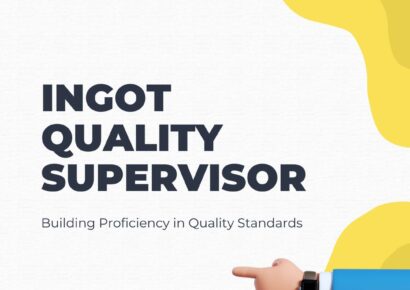Currently Empty: ₹0.00
About Course
The Ingot Quality Operator is responsible for ensuring the high standards of ingot production. This role involves meticulous inspection, testing, and adherence to quality control measures. Operators must possess expertise in identifying and addressing defects, contributing to the overall efficiency and reliability of the ingot manufacturing process. Collaboration with production teams and the implementation of quality assurance protocols are integral aspects of the Ingot Quality Operator’s responsibilities. Continuous monitoring and attention to detail are essential for producing ingots with optimal structural and functional properties.
Course Content
Basic Introduction to PV Ingot
-
Ingot Manufacturing Process Flow
00:00
Ingot Quality
6s Occupational Health, Safety, and Environment (OHSE)
Workplace Help and Resources
Tags








